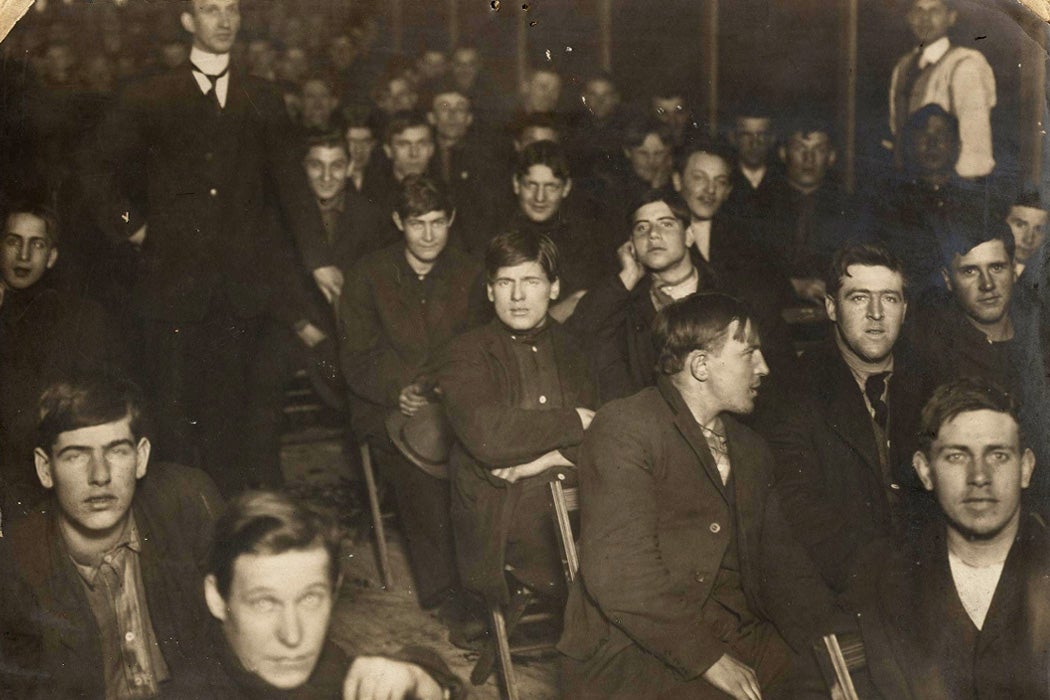Picture a “hobo” and you probably imagine a homeless vagrant, perhaps riding the rails while carrying a bindle. You might not think of a member of a social movement developing a critique of an unjust economic system. But as legal historian Joel E. Black writes, in the early twentieth century, hobos did just that—publishing and selling newspapers, forming a union, and helping to create Chicago’s Hobo College.
Black writes that hobos “burst onto the national scene” in America when the Panic of 1873 set off an economic depression. Many employers prioritized the jobs of breadwinners, leaving single men to wander from place to place by freight train looking for work. Soon, middle-class media was warning of a lawless “tramp menace.”
Local governments responded with vagrancy laws that criminalized existing in public without visible means of support. Many of the laws allowed people to be held in jail without being charged—a system decried as unconstitutional by some middle-class professionals but defended by others. Gilbert Holland, editor of Scribner’s Magazine, wrote that the tramp “has no rights, but those which the society may see fit of its grace to bestow upon him. He has no more rights than the sow which wallows in the gutter.” Chicago Police Chief John Collins celebrated a 1905 city ordinance as a “way to imprison or drive from the city the hordes of disreputables against whom no specific charge can be evidenced by police.”
Unsurprisingly, Black writes, itinerant men reacted poorly to these laws. “Hobo King” Robert Wilson began organizing meetings and eventually created a short-lived Hobo Union, which advanced the idea of declaring all vagrancy laws unconstitutional.
Weekly Digest
A Chicago doctor named Ben Reitman described attending a 1907 meeting in St. Louis chaired by Wilson where about 300 hobos discussed the laws. The next year, Reitman became the director of the newly-formed Hobo College in a makeshift Chicago neighborhood known as Hobohemia. The college offered classes in economics, public speaking, English composition, literature, and law. In 1917, a Chicago Evening News reporter described visiting the college to find a library, a dining hall where “meals are served at cost,” a reading library, a piano, and an office where “labor fanatics and visitors from the IWW congregate to discuss the labor question.”
Black writes that Hobo College and other institutions for marginal workers helped develop a critique of the “free labor” ideology that came to dominate the country after the Civil War. Free labor painted employers and employees as two parties entering contracts on equal footing. But hobos were well aware of the actual power dynamics involved. Writing in the “Hobo” News, a 16-page circular published in St. Louis and Cincinnati in the 1910s and 1920s, D.H. Horn asked, “How much justice do we find when the wage working class of this country enjoys NO LEGALLY RECOGNIZED RIGHTS to work for a living… and yet our politicians make it a crime of VAGRANCY when a man, through no fault of his own, is without work and without food?”







